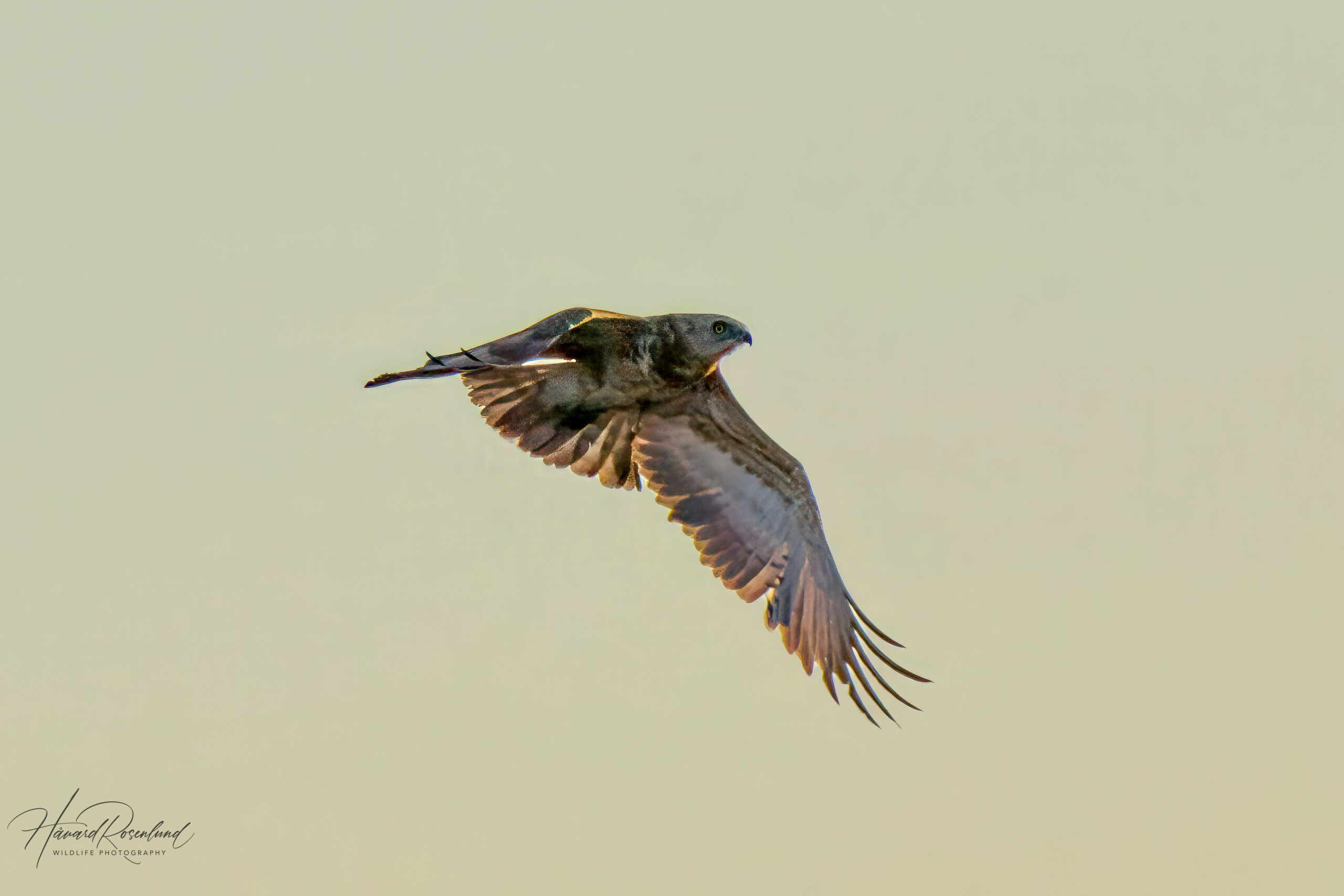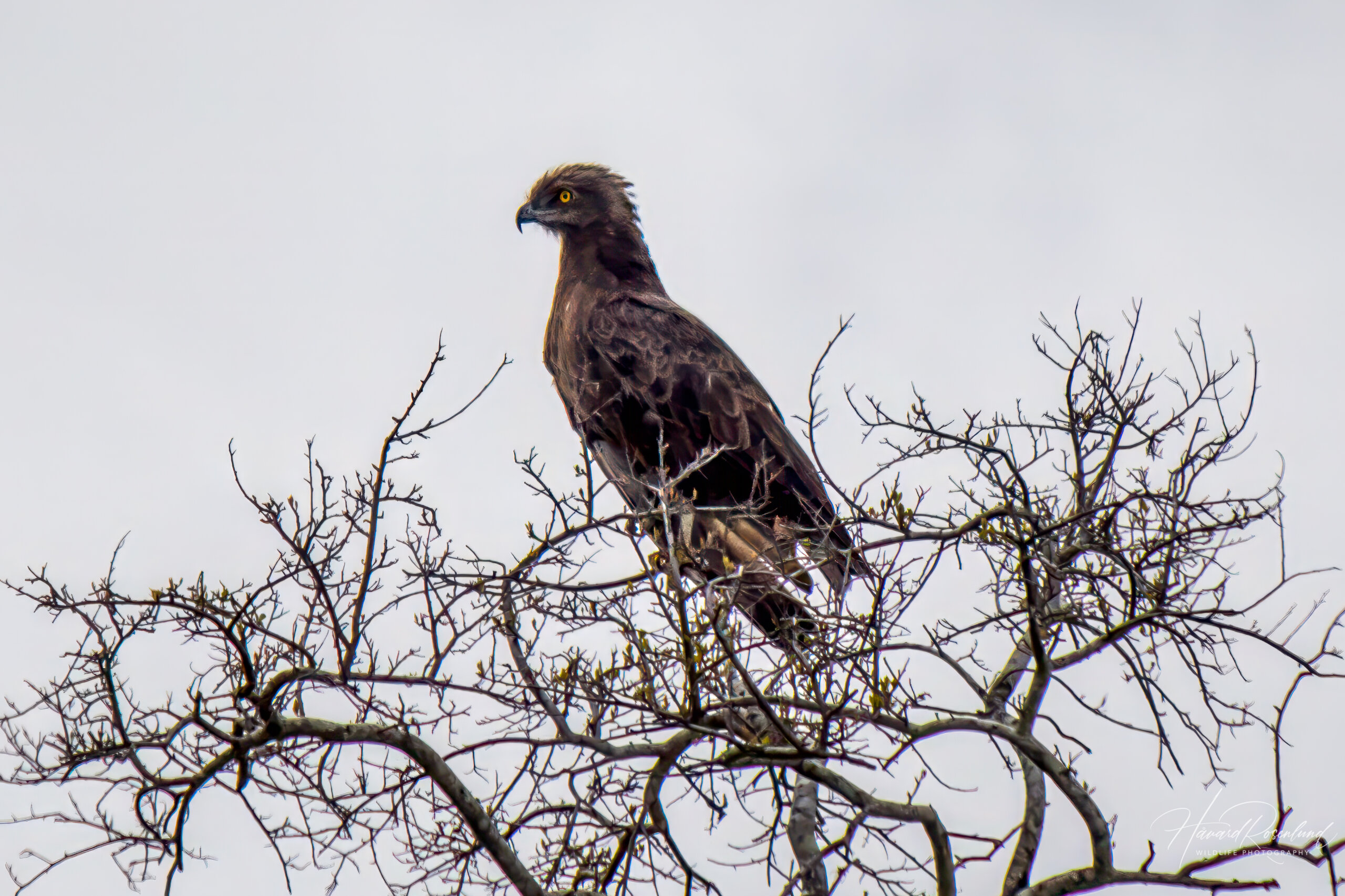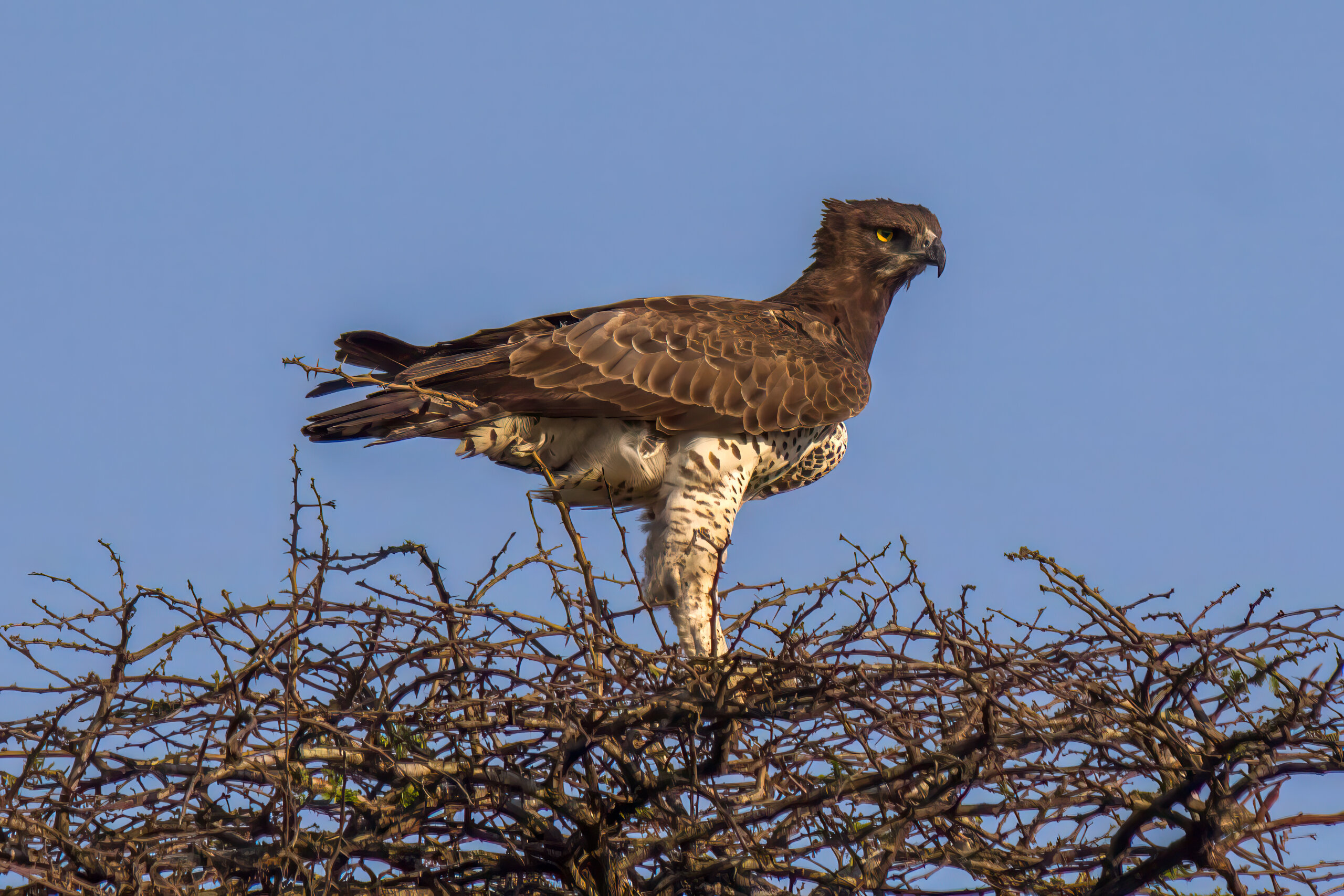Black-chested Snake-Eagle
(Circaetus pectoralis)
Description
The black-chested snake-eagle (Circaetus pectoralis) is a large bird of prey found in sub-Saharan Africa. It reaches a length of 63-71 cm (25-28 in) and a wingspan of 160-185 cm (5 ft 3 in – 6 ft 1 in). It can sometimes be confused with the much larger, and only slightly similar martial eagle (Polemaetus bellicosus). The black-chested snake-eagle has black to dark brown upperparts, wings, head, chest, and white underparts. It has yellow eyes and a black beak. In contrast to the martial eagle, it does not have spotted undersides and feathered legs (as is common on true eagles). Juveniles are paler and rufous in color and have more of a barred and spotted pattern on the chest and belly which gradually disappears as it matures. It takes three years to reach adult plumage.
Diet & habitat
Black-chested snake-eagles prefer open habitat and is found in open grasslands, wooded savannas, and semi-deserts. It can also inhabit forests but will shy away from dense forests and true deserts. It will scan for prey in flight, either soaring or hovering. When a prey is located it will descend towards it in a stepwise fashion before it plunges down on its prey in an attempt to crush its skull. Snakes take up the largest portion of its diet, but it will also hunt lizards, amphibians, rodents, bats, fish, invertebrates, and, on rare occasions, birds.
Nesting
This bird is monogamous and territorial, and the breeding season changes with geographical location. A breeding pair will build a nest together in the top of a flat tree canopy, or, sometimes, on top of utility poles and pylons. The nest is usually made up of sticks and lined with leaves. The female lays, almost exclusively, one egg, which she incubates for 51-52 days. The chick will leave the nest after 90-113 days, but will receive the most attention, brooding, and food from both parents during the first 25 days. It will only gain full independence after about six months, although there have been rare cases of offspring depending on their parents for as much as 18 months.
Status
Population status of this species is currently unknown, although it has a wide range across sub-Saharan Africa. It is mostly an uncommon bird but is locally common in some areas. Due to its large range and no perceived threats, it is listed as least concern on the IUCN Red List.









